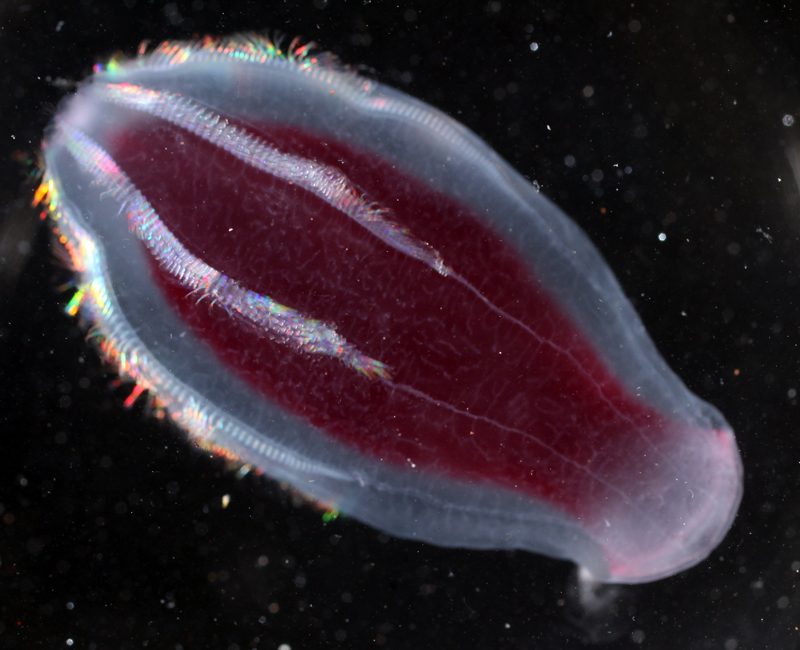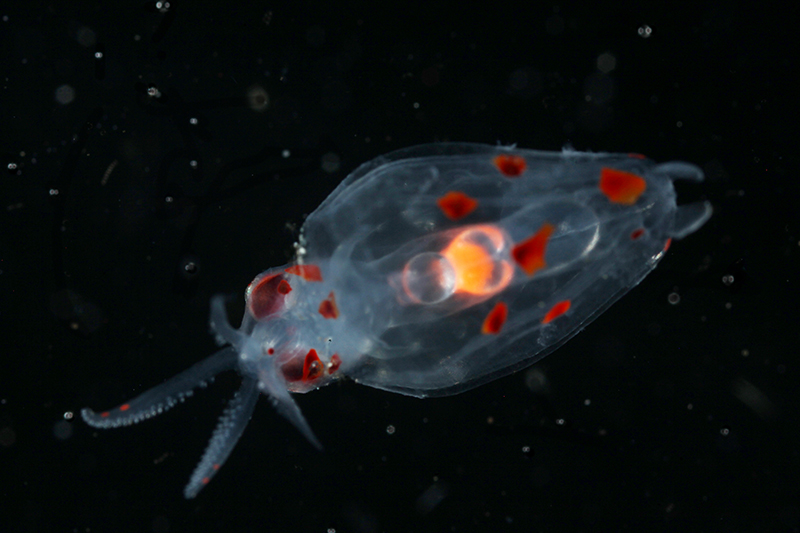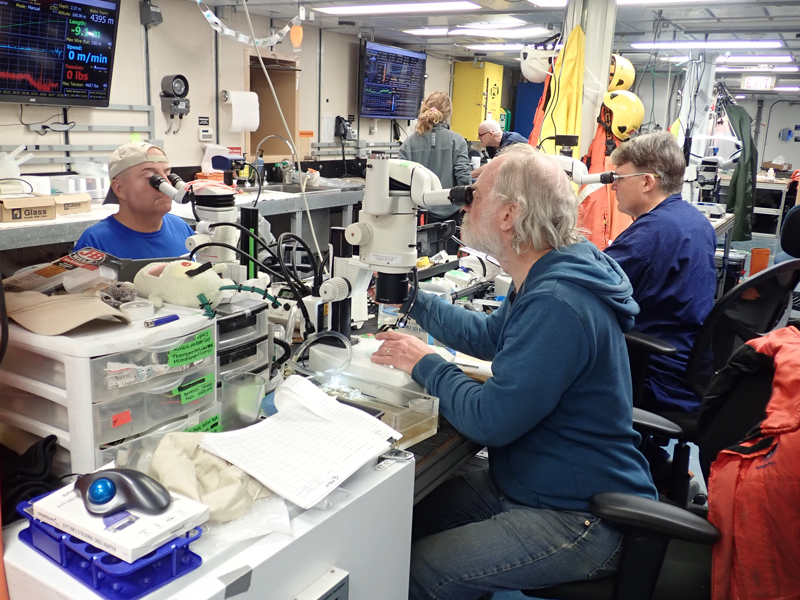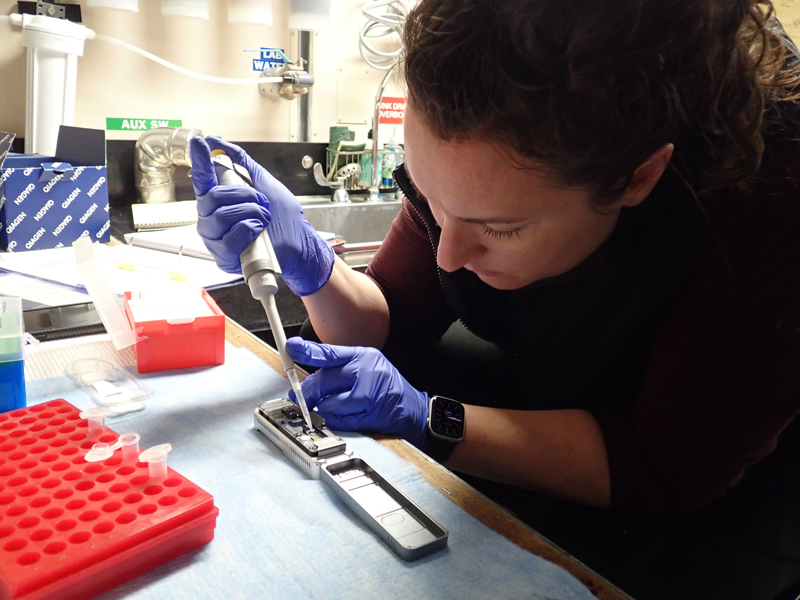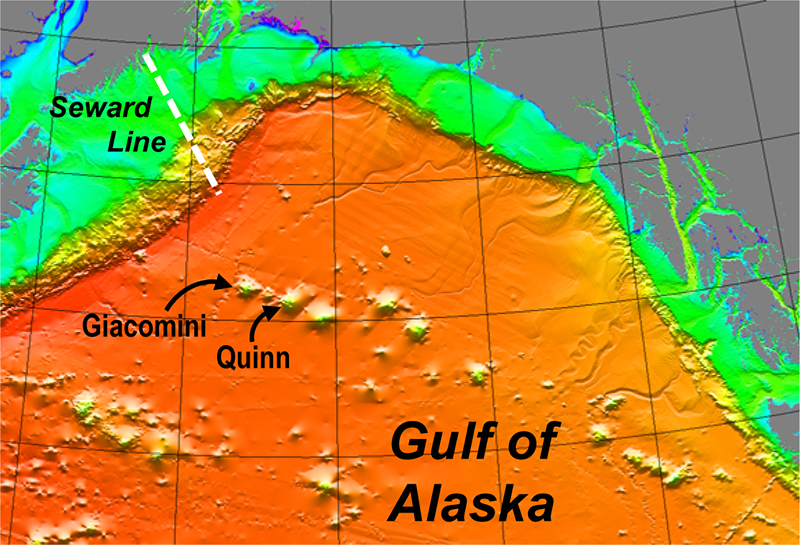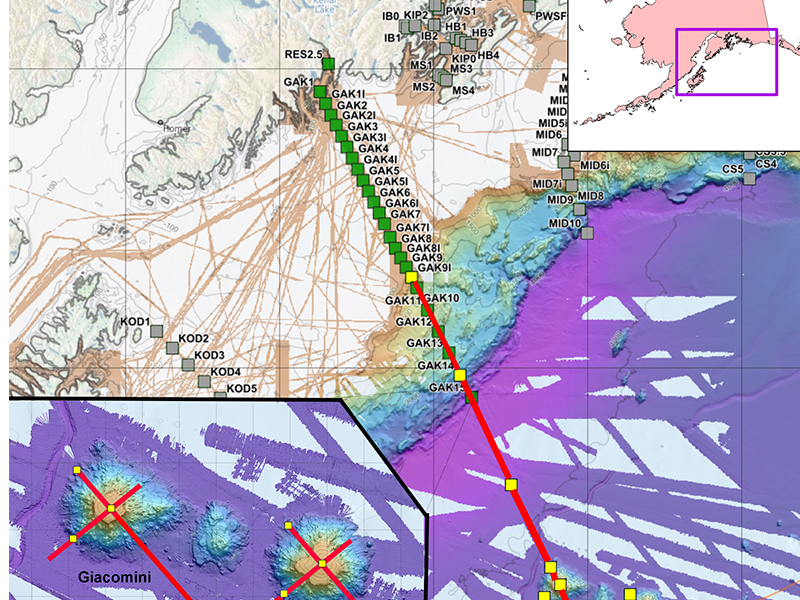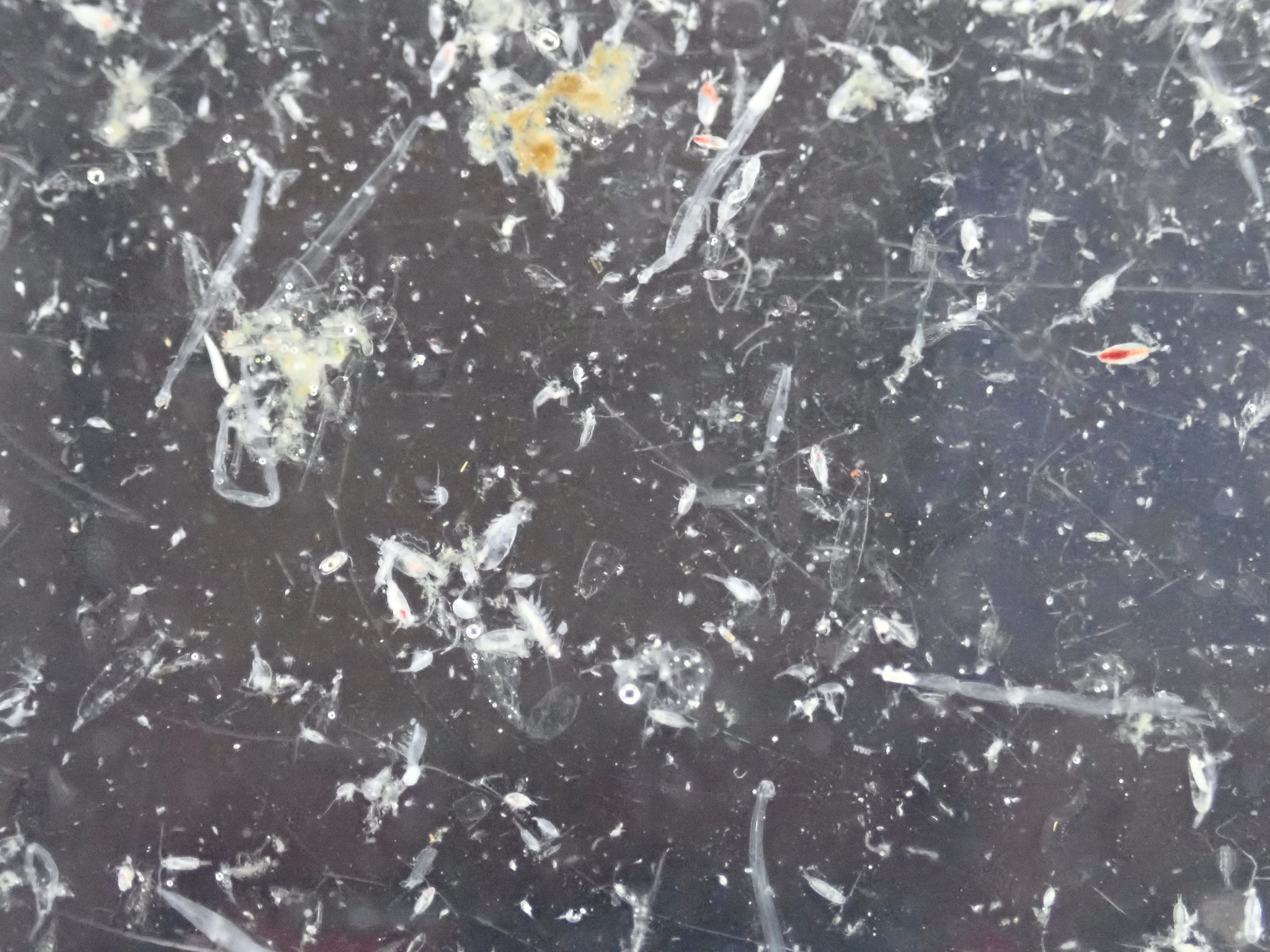
Exploring Pelagic Biodiversity of the Gulf of Alaska and the Impact of Its Seamounts
Past Expedition
Overview
From May 12-21, 2024, researchers investigated the pelagic diversity in the Gulf of Alaska. Using a novel, multipronged exploration program, they inventoried the small animals (zooplankton and micronekton), like fish, crustaceans, gelatinous animals, and squid, in the water column, finding or observing many species that are new to science as well as some that were not known in the region. These discoveries occurred across the full taxonomic spectrum of zooplankton, from tiny crustaceans to large jellyfish.
The northern Gulf of Alaska is a region of high productivity and supports some of the nation’s largest commercial fisheries. But, ocean warming and deoxygenation are raising concerns about the future of the region’s poorly understood deep waters and the fish and invertebrates that live there.
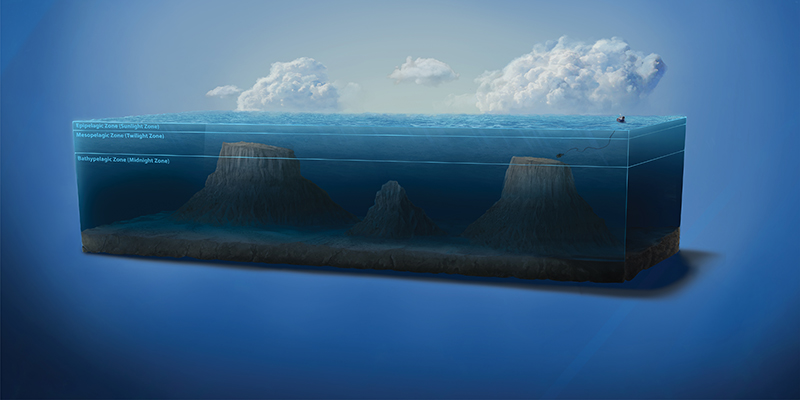
Download largest version (jpg, 2.64 MB).
This expedition built on the team’s previous work in the region, with the goal of improving understanding of the diversity and distribution of these deep-ocean animals. To help achieve this goal, they used state-of-the-art acoustic sensing and sampling methods, including a variety of plankton net systems and a towed imaging system, with a focus on the waters around two seamounts near the edge of the U.S. Exclusive Economic Zone: Giacomini and Quinn.
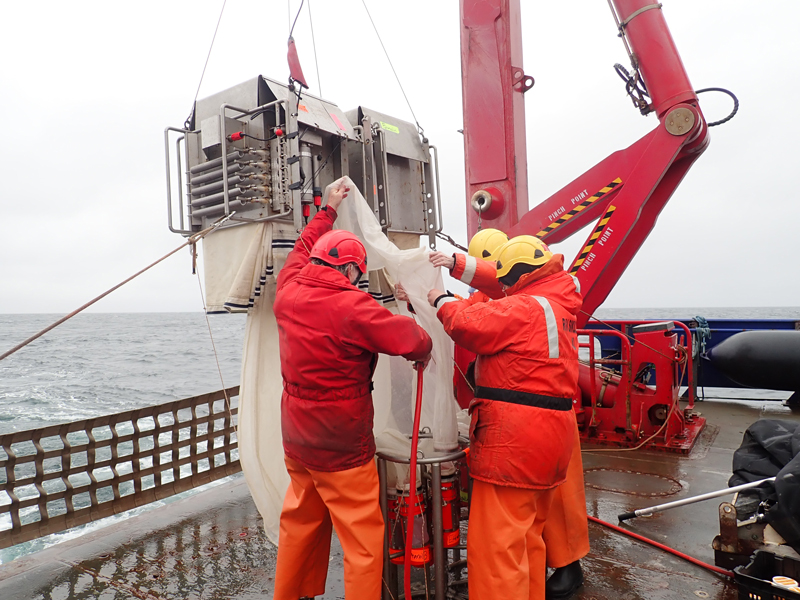
Download largest version (jpg, 3.56 MB).
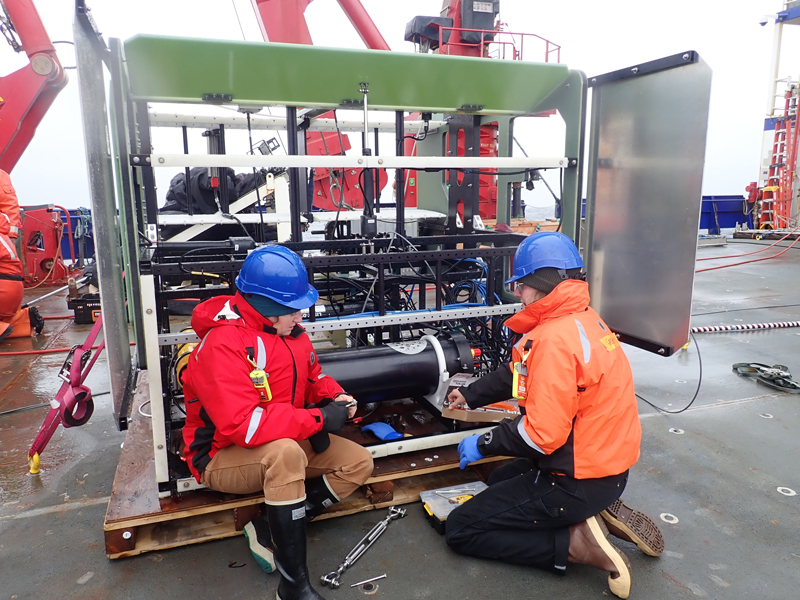
Download largest version (jpg, 3.96 MB).
Features
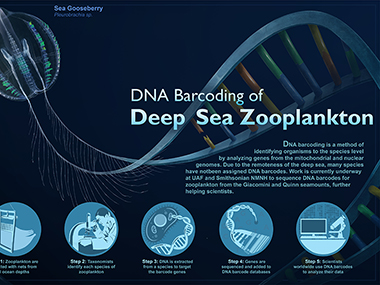
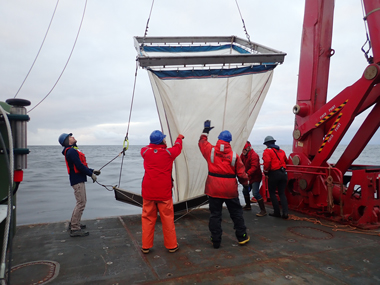
Multimedia
Featured multimedia assets associated with this project.
Education
Our Learn & Discover page provides the best of what the NOAA Ocean Exploration website has to offer to support educators in the classroom during this expedition. Each theme page includes expedition features, lessons, multimedia, career information, and associated past expeditions. Below are related top education themes for this expedition.
Meet the Exploration Team
Learn more about the team members and their contributions to this project.


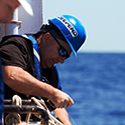
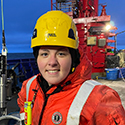


Resources & Contacts
- University of Alaska Fairbanks College of Fisheries and Ocean Sciences
- NOAA National Systematics Laboratory/Smithsonian Institution National Museum of Natural History
- Japan Agency for Marine-Earth Science and Technology (JAMSTEC)
- Danish Technical University, National Institute of Aquatic Resources (DTU AQUA)
- Nova Southeastern University
- University of Washington School of Aquatic and Fishery Sciences
- Institute of Oceanology, Polish Academy of Sciences
- Scripps Institution of Oceanography
-
Emily Crum
Communications Specialist
NOAA Ocean Exploration
ocean-explore-comms@noaa.gov -
Jeff Richardson
Communications Manager
University of Alaska Fairbanks College of Fisheries and Ocean Sciences
jarichardson6@alaska.edu

